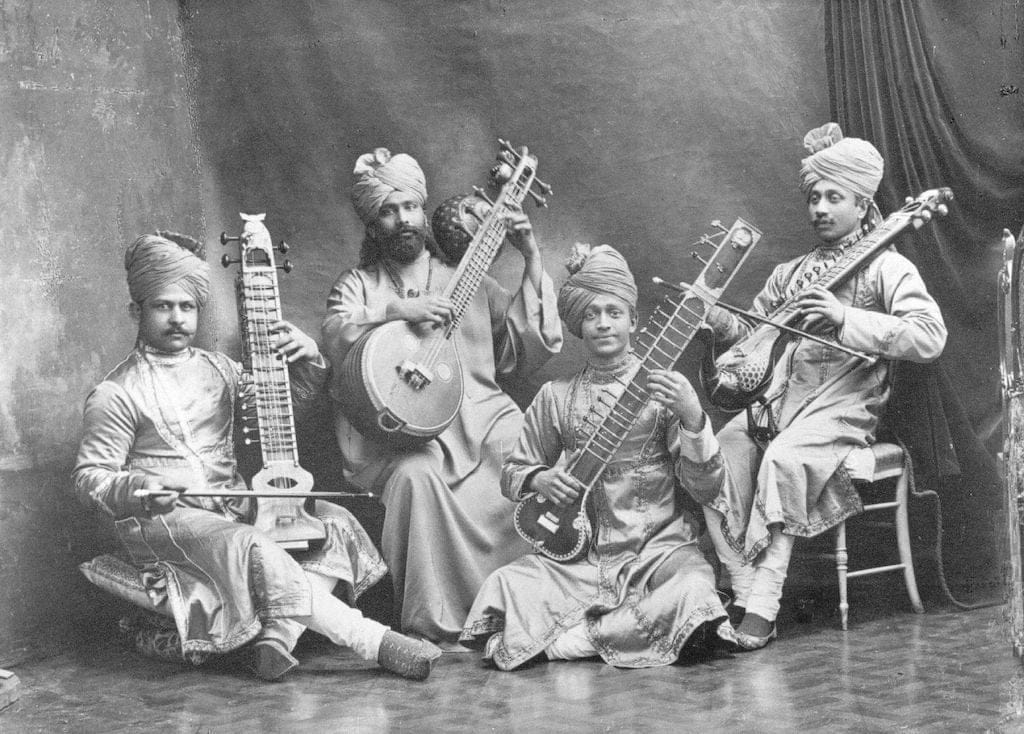Evolution and Adaptation of Rhythmic Cycles in Hindustani Music

In the realm of Hindustani classical music, the tala serves as the rhythmic backbone, guiding and structuring the intricate melodic and improvisational elements of a performance. The evolution of tala has been a journey spanning centuries, interwoven with the rich tapestry of Indian cultural heritage, diverse regional influences, and the creative expressions of various schools and gharanas. This essay aims to delve into the historical trajectory of tala, exploring its gradual evolution and the distinctive contributions of different musical traditions in shaping the complex rhythmic cycles in Hindustani music.
Ancient Origins and Early Development
The roots of tala can be traced back to ancient Indian treatises on music such as the Natyashastra, where principles of rhythm were first documented. In its early stages, tala existed as a rudimentary framework, providing a foundational structure for the melodic elements of music. The concept of rhythm was intertwined with the spiritual and cultural practices of the time, with the use of percussive instruments in religious ceremonies and folk traditions shaping the early development of rhythmic cycles.
Medieval Period: Cultural Synthesis and the Emergence of Diverse Talas
The medieval period witnessed a significant synthesis of various cultural influences, leading to the emergence of diverse talas in Hindustani music. The courts of different rulers and patrons became crucial hubs for the exchange of musical ideas, resulting in the assimilation of Persian, Arabic, and indigenous Indian rhythmic concepts. This cultural amalgamation laid the foundation for the intricate patterns and complex rhythmic cycles that characterize Hindustani music.
Contributions of Different Schools and Gharanas
The evolution of tala was not a singular process but a collective endeavour, with different schools and gharanas making notable contributions to its development. The Delhi Gharana, for instance, emphasized the use of bols (mnemonic syllables) to represent different rhythmic patterns, thereby enhancing the pedagogical aspects of tala. On the other hand, the Farukhabad Gharana focused on intricate layakari (rhythmic play) and the subtle nuances of tempo modulation, enriching the aesthetic dimensions of tala performance.
Similarly, the Benaras Gharana introduced unique rhythmic innovations, incorporating elements of Kathak dance and tabla bols into the tala repertoire, thus infusing a dynamic and vibrant energy into Hindustani rhythmic structures. These diverse contributions not only enriched the technical aspects of tala but also fostered a deeper understanding of its artistic and expressive potential.
Evolution and Adaptation in Modern Times
The modern era witnessed a dynamic transformation in the way talas were perceived and practiced in Hindustani music. With the advent of recording technology and the global dissemination of Indian classical music, the boundaries of traditional tala structures began to expand, accommodating new experimental forms and cross-cultural collaborations. The fusion of traditional talas with contemporary musical genres gave rise to innovative compositions, pushing the boundaries of rhythmic experimentation and improvisation.
Contemporary maestros and composers have played a pivotal role in revitalizing the tala tradition, incorporating elements from other musical traditions and genres, thereby infusing a renewed vitality into the rhythmic landscape of Hindustani music. The incorporation of electronic instruments, innovative sound technologies, and experimental rhythmic patterns has expanded the horizons of tala, creating a dynamic interplay between tradition and modernity.
Preservation and Revival of Traditional Talas
Despite the influx of modern influences, efforts to preserve and revive traditional talas have remained a crucial aspect of Hindustani music pedagogy. Music academies, cultural institutions, and dedicated practitioners have taken significant strides in documenting and safeguarding rare and endangered talas, thereby ensuring their continuity for future generations. Furthermore, the integration of tala education into formal music curricula has played a crucial role in nurturing young talents and perpetuating the rich heritage of Hindustani rhythmic traditions.
Conclusion
The journey of tala in Hindustani music embodies a profound narrative of cultural assimilation, artistic innovation, and the preservation of traditional heritage. From its ancient origins to its contemporary adaptations, tala has evolved as a dynamic and multifaceted rhythmic entity, reflecting the diverse cultural tapestry of Indian classical music. The contributions of various schools, gharanas, and contemporary musicians have shaped the intricate patterns and rhythmic complexities that define the essence of Hindustani music. As we embrace the rich legacy of tala, it becomes imperative to continue nurturing its traditional roots while embracing the spirit of creative exploration and innovation, thus ensuring its enduring vitality in the ever-evolving landscape of Indian classical music.





